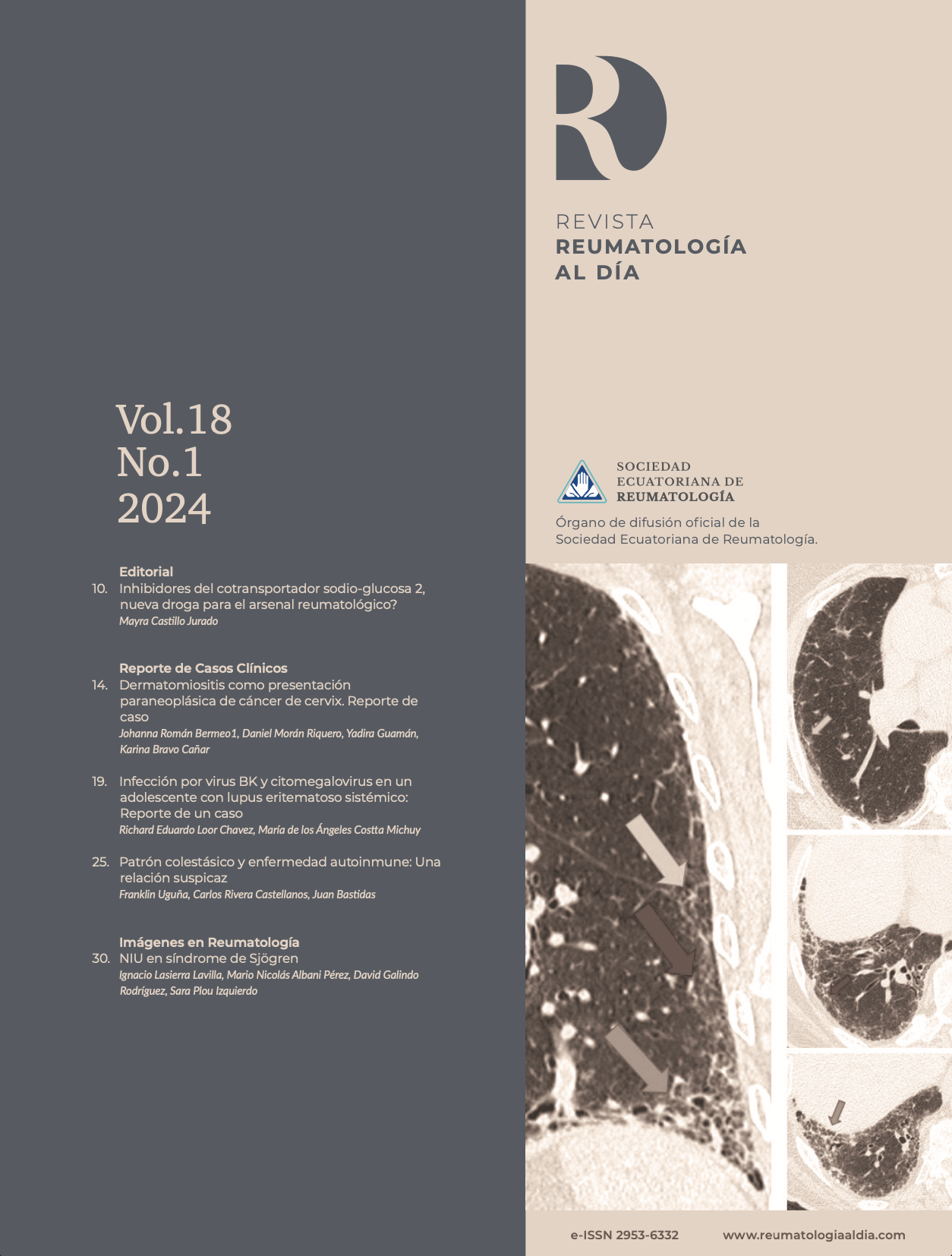Dermatomyositis as a paraneoplastic presentation of cervical cancer: A case report
Published 2024-04-25
Keywords
- Inflammatory myopathy,
- Dermatomyositis,
- Neoplasia,
- Muscle weakness
How to Cite
Copyright (c) 2024 Reumatología al Día

This work is licensed under a Creative Commons Attribution-NonCommercial-NoDerivatives 4.0 International License.
Abstract
Dermatomyositis (DM) and polymyositis (PM) are autoimmune disorders characterized by inflammatory myopathy. The risk of malignancy among patients with DM is highest in the first year after diagnosis, then decreases between years 2 and 5, and remains elevated even after 5 years. The types of associated malignancy remain controversial, but there is an elevated risk of malignant neoplasms of the lung, ovary, pancreas, stomach, colorectum, and non-Hodgkin lymphoma in patients with DM; and non-Hodgkin lymphoma, malignant neoplasms of the lung and bladder in patients with PM. The case of a 60-year-old female patient with progressive clinical symptoms during the last six months is presented. Symptoms observed included progressive muscle weakness, periorbital erythema, alopecia, weight loss, generalized edema, and progressive dysphagia. The physical examination revealed symmetrical muscle weakness (1/5 Daniels) predominantly proximal, heliotrope rash, and V sign on the neck. Laboratory analyzes showed increased muscle enzymes, presence of specific autoantibodies, elevated CA125 and b-2 microglobulin, and predominantly mononuclear pleural fluid. Cytology and cervical biopsy showed high-grade intraepithelial lesion She was initially treated with corticosteroids and disease-modifying antirheumatic drugs (DMARDs), and upon receiving the definitive diagnosis, she was referred to the local oncology hospital.



